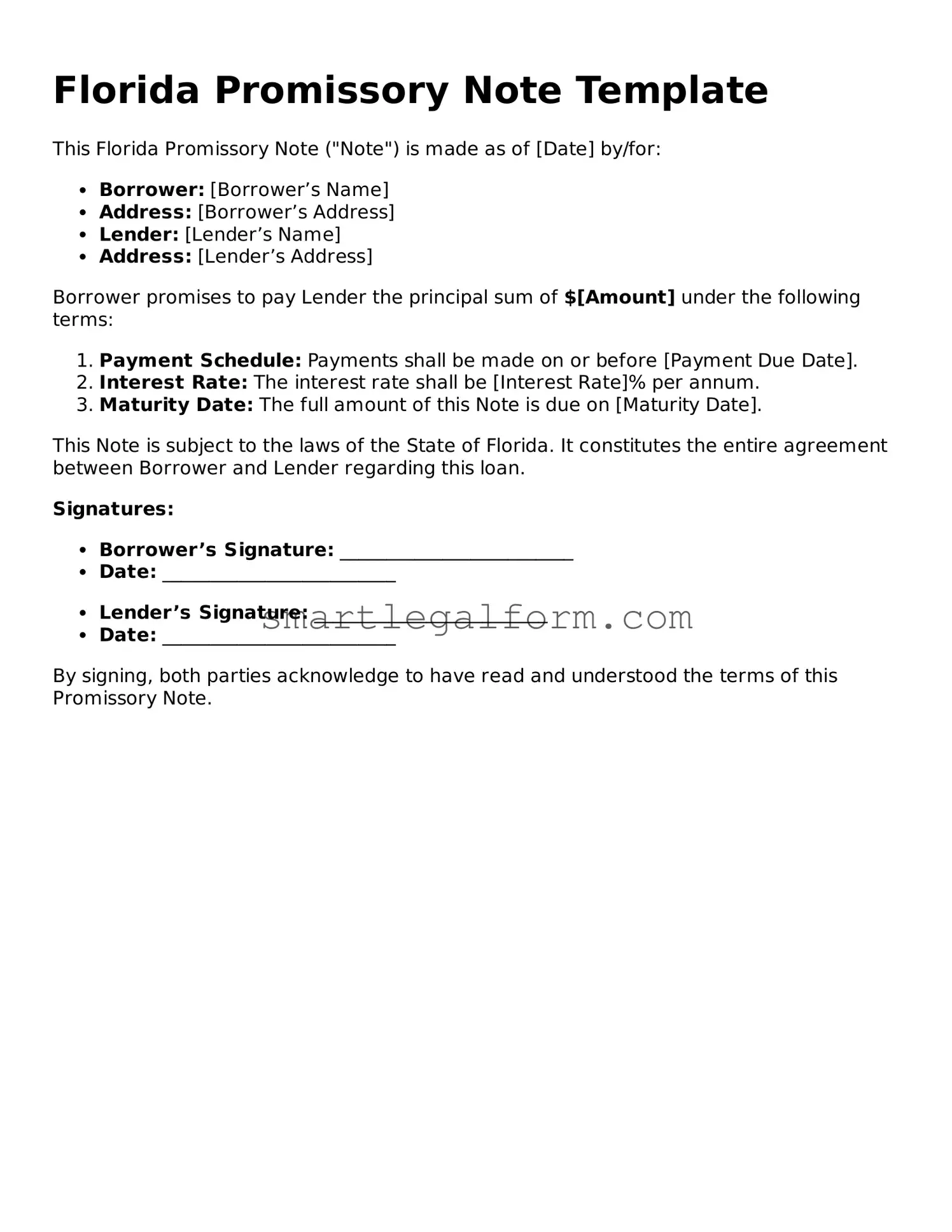Florida Promissory Note Template
This Florida Promissory Note ("Note") is made as of [Date] by/for:
- Borrower: [Borrower’s Name]
- Address: [Borrower’s Address]
- Lender: [Lender’s Name]
- Address: [Lender’s Address]
Borrower promises to pay Lender the principal sum of $[Amount] under the following terms:
- Payment Schedule: Payments shall be made on or before [Payment Due Date].
- Interest Rate: The interest rate shall be [Interest Rate]% per annum.
- Maturity Date: The full amount of this Note is due on [Maturity Date].
This Note is subject to the laws of the State of Florida. It constitutes the entire agreement between Borrower and Lender regarding this loan.
Signatures:
- Borrower’s Signature: _________________________
- Date: _________________________
- Lender’s Signature: _________________________
- Date: _________________________
By signing, both parties acknowledge to have read and understood the terms of this Promissory Note.
